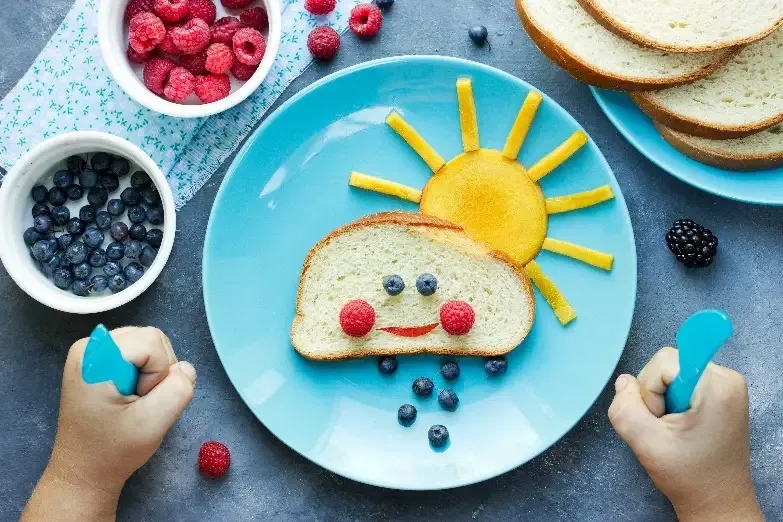August 2025 newsletter
Creating positive food environments
In the earliest years of life, children are growing faster—physically, emotionally, and cognitively—than they ever will again. These formative years are a window of opportunity, not just for learning and play, but for building lifelong habits that shape who children will become. Among the most powerful influences during this critical period? Nutrition.
It is normal for young children to eat more at some meals and less at others depending on things like activity level, growth spurts, and emotions like excitement or sadness. We know that young children can have small appetites, which can sometimes make mealtime a challenge. To support children’s nutrition, we can encourage a variety of healthy foods, offer small meals and snacks at regular times throughout the day, and let children decide how much food they want to eat.
Early childhood educators play a powerful role in nurturing healthy eating habits by creating a positive, welcoming environment around food. Through gentle encouragement, curiosity, and modeling balanced choices, we invite little ones to explore new flavours and textures at their own pace. By respecting each child’s unique appetite and preferences, educators build trust and foster a joyful relationship with food—one that empowers children to listen to their bodies, develop autonomy, and grow into confident, mindful eaters for life.
Your relationship with food is one of your earliest and most meaningful relationships. It’s also a relationship you will have for the rest of your life. It might as well be the best relationship that it can be.
Unknown author
The Division of Responsibility in Feeding
A question many educators ask about nutrition and feeding is, “Who does what?” We know that feeding young children is about so much more than just food – it’s about building healthy relationships with eating, one meal and snack at a time.
The Division of Responsibility in Feeding is a well-researched framework created by feeding expert Ellyn Satter. It helps children build lifelong healthy eating habits by setting clear roles for adults and children at mealtime. By following this approach, early learning programs focus on:
- Offering a variety of nutritious, familiar, and new foods
- Allowing children to serve themselves when possible
- Encouraging—but never forcing—children to try foods
- Create a calm, social mealtime environment
How we teach and talk about food with children is just as important as what we feed them.
Rainbowplate.com
Adults provide, children decide
Adults are responsible for...
- What food is offered (include a variety of food groups)
- When meals and snacks happen (offer food consistently)
- Where eating happens (safe, pleasant space)
Children are responsible for...
- How much they eat
- Whether they eat at all (in any order they choose)
- Adults decide what’s on the plate, when it’s served, and where we eat.
- Children decide what they’ll try and how much they want.
This approach helps reduce mealtime battles, picky eating, and pressure around food.
For more information about children’s and adult’s roles around food and eating look at the Government of Canada’s resources on Canada’s food guide, including:
- Toolkit for educators on Canada’s food guide:
- Learn why healthy eating is important for children:
More resources on food and feeding for early years providers, including ideas on facilitating a positive mealtime time environment in early learning centres:
Resources to explore and share
The Yukon Health Promotion Unit provides resources for families to help make informed food choices. These resources are important for early childhood educators, as the information presented helps determine healthy food choices as well as support our conversations with families about food and feeding.
- Find information on nutritious meals and how to deal with picky eaters:
- Read about how to help toddlers develop healthy eating habits:
- Read about how to introduce babies to solid foods:
- Read about healthy meals that will assist in children’s development:
It can be a challenge to communicate with families about the importance of sending healthy meals and snacks from home. For support with managing foods from home, and communicating with families about healthy options, here are some helpful resources:
- https://appetitetoplay.com/healthy-eating/tips-ideas/meals-and-snacks-home
- https://appetitetoplay.com/healthy-eating/tips-ideas/ways-communicate-families-about-healthy-eating
- https://www.interiorhealth.ca/sites/default/files/PDFS/feeding-young-children.pdf
- Raising our Healthy Kids video series: http://www.raisingourhealthykids.com
Book Nook
Use stories to introduce children to nutrition and food! Registered dieticians at Ottawa Public Health have created a list of books for children to promote healthy eating messages while also developing literacy skills. Check out this list for additional books:
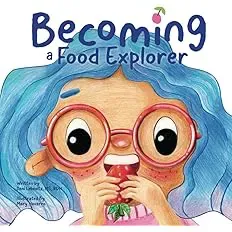
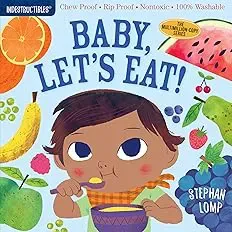
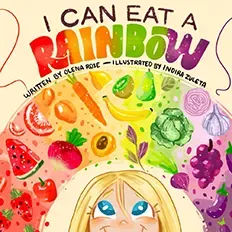
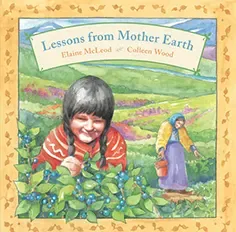
Our food is our medicine, our food is healing, our food brings everybody together, our food creates family bonds when you eat it together, it triggers memories of long ago.
Jenny Cross, Haida elder
Explore
Activity idea: Bring kids to the kitchen!
Toddlers and preschoolers can help with a variety of safe and engaging activities in the kitchen, fostering a love for cooking and developing important skills. Here are some ideas for helping children feel involved and excited about food:
- Washing produce
- Tearing lettuce
- Mixing ingredients
- Pouring
- Kneading dough
- Using cookie cutters
- Sprinkling ingredients
- Mashing
- Spreading
- Measuring
- Cutting soft foods
Tips for success:
- Keep it simple
- Pick a recipe with instant results
- Supervise closely
- Make it fun
- Focus on the process
- Have child-sized tools
- Clean up together
Grow
Reflective questions for early childhood educators encourage critical thinking about food choices, eating environments, and the role of educators in shaping healthy eating habits. Consider these questions about your role:
- What are my own beliefs and attitudes about healthy eating, and how might these influence my interactions with children and families?
- How can I create a more positive and enjoyable eating experience for children?
- How do I use language around food that is positive, encouraging and respectful?
- How are children’s cultural backgrounds reflected in feeding practices?
- How can I build strong relationships with children and families to support open communication about nutrition?
- How can I involve children in the planning and preparing of meals and snacks?
